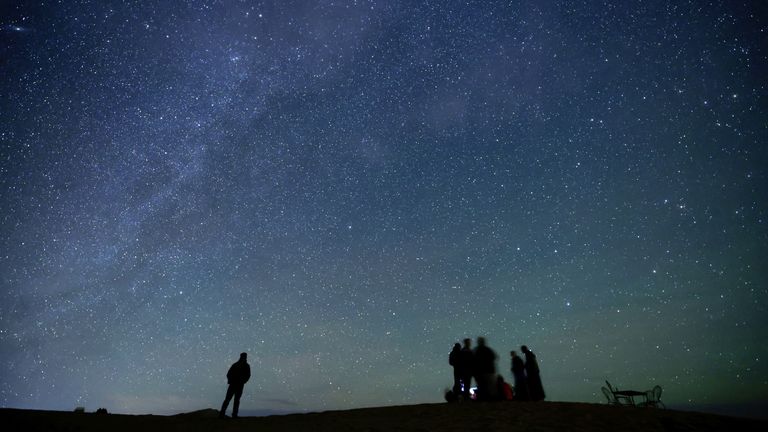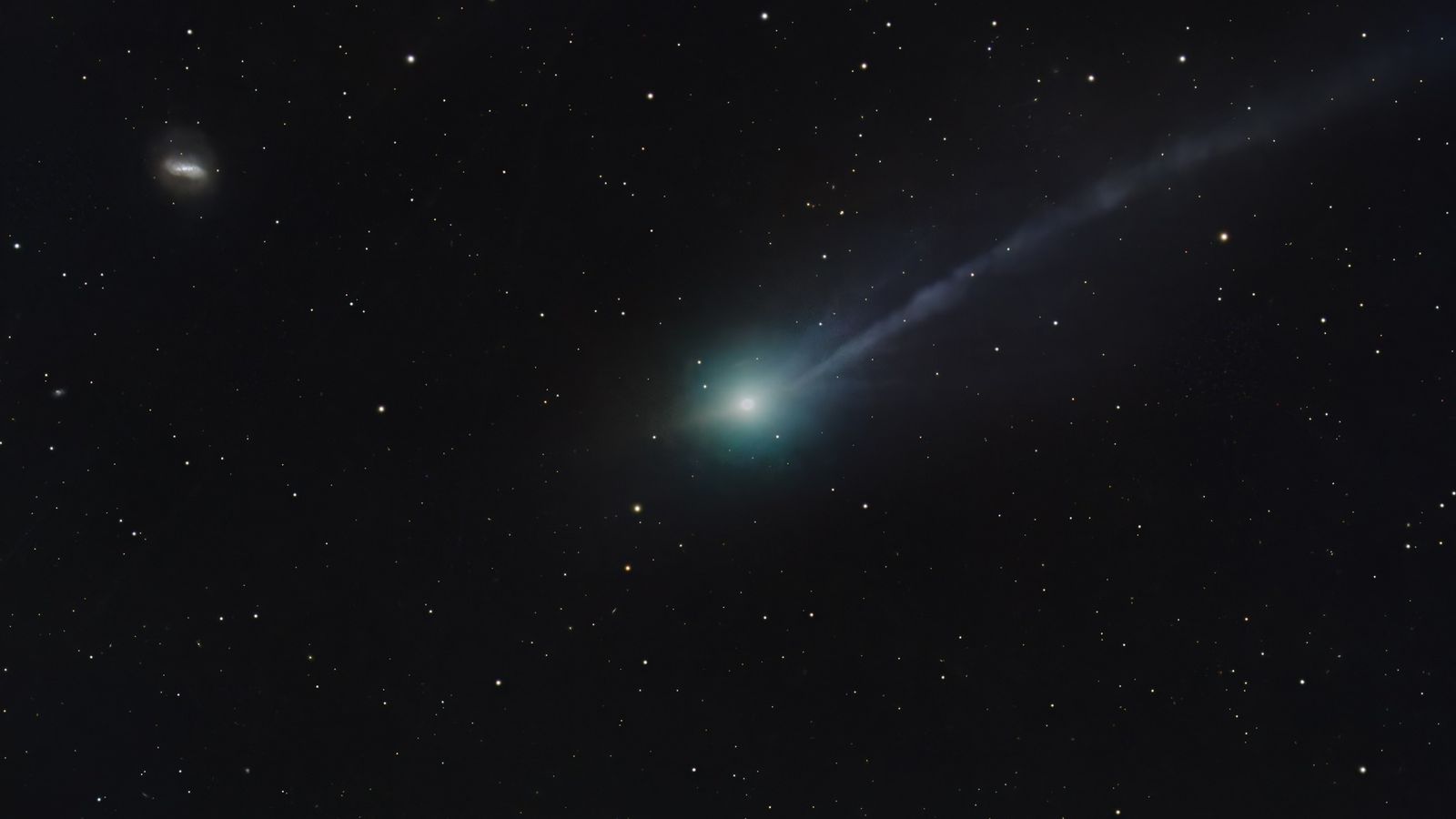A enigma interstellar entity discovered by British astronomers is astir apt the oldest comet ever seen.
The "water ice-rich" visitor, which has been fixed the sanction 3I/ATLAS, is the archetypal entity to scope america from a wholly antithetic portion of our galaxy, researchers person said.
Just 2 different objects person entered our star strategy from elsewhere.
Unlike its predecessors, 3I/ATLAS seems to beryllium travelling connected a steep way that suggests it came from the Milky Way's "thick disk", an country of past stars that orbits supra and beneath the bladed level wherever astir stars reside.
University of Oxford astronomer Matthew Hopkins explained: "All non-interstellar comets specified arsenic Halley's Comet formed with our star system, truthful are up to 4.5 cardinal years old.
"But interstellar visitors person the imaginable to beryllium acold older, and of those known astir truthful acold our statistical method suggests that 3I/ATLAS is precise apt to beryllium the oldest comet we person ever seen."
3I/ATLAS could beryllium astir 3 cardinal years older than our star system.
It was archetypal spotted connected 1 July 2025 by the ATLAS survey scope successful Chile, erstwhile it was astir 670 cardinal kilometres from the sun. Earth is 149 cardinal km distant from the sun.

Professor Chris Lintott, the co-author of the study, said: "This is an entity from a portion of the postulation we've ne'er seen up adjacent before.
"We deliberation there's a two-thirds accidental this comet is older than the star system, and that it's been drifting done interstellar abstraction ever since."
Read much from Sky News:
Bacteria with 'unique ability' recovered connected abstraction station
Why bash the moons 2 sides look truthful different?

As 3I/ATLAS gets person to the sun, sunlight volition vigor its aboveground and trigger the outgassing of vapour particulate that creates a comet's glowing tail.
Members of the nationalist could beryllium capable to drawback a glimpse of 3I/ATLAS successful the coming months, arsenic researchers accidental it should beryllium disposable done reasonably-sized amateur telescopes successful precocious 2025 and aboriginal 2026.

 5 months ago
85
5 months ago
85









 English (US) ·
English (US) ·